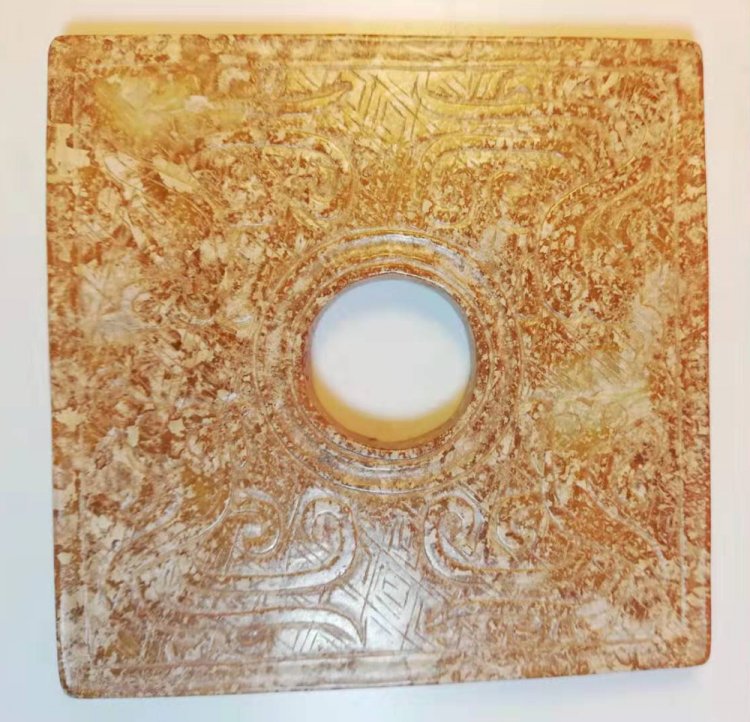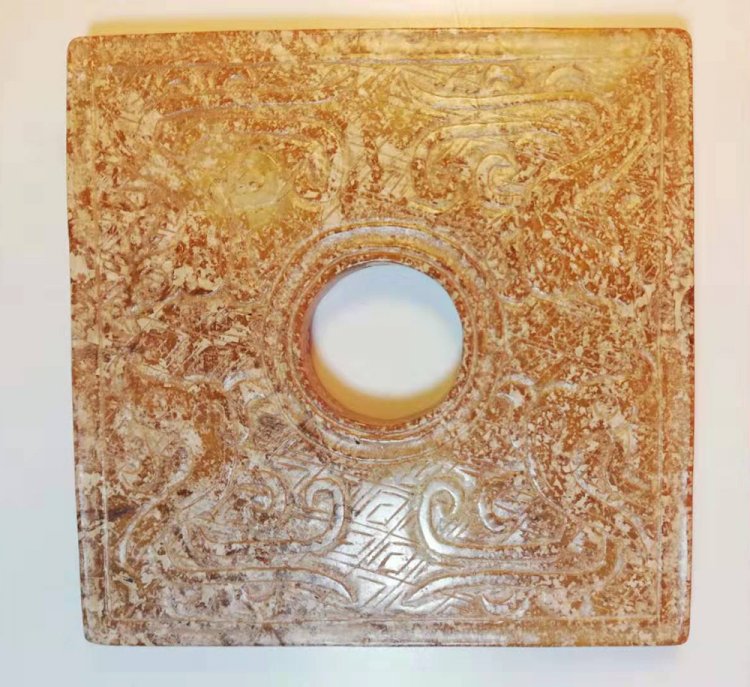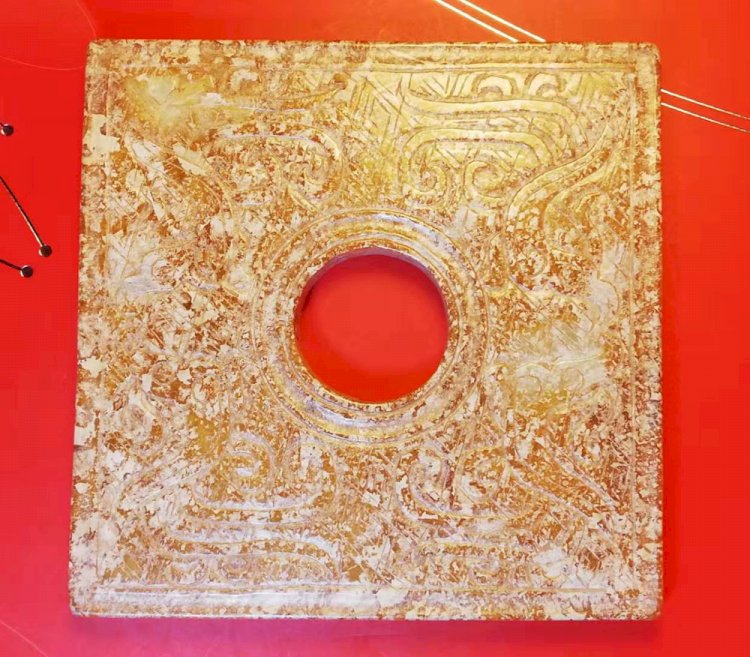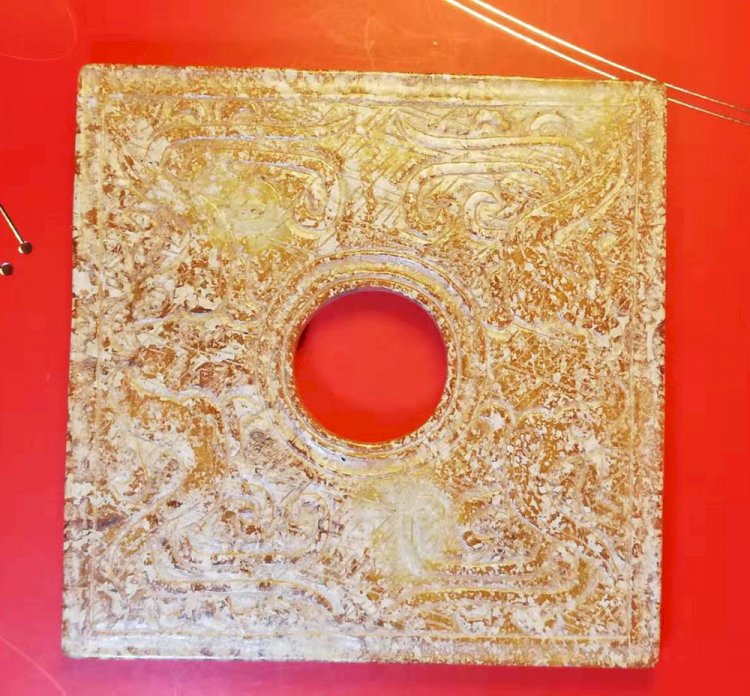E81 Phoenix Square Jade Bi
Phoenix Square Jade Bi
E81 Phoenix Square Jade Bi (Each side: 9.15cm, Thickness: 0.86cm
)Early Spring and Autumn Period Green and yellow jade,carved on the four edges of the wall with string pattern, and hollowed in the string pattern (commonly known as concave surface grinding), that is to say, the wide string pattern line has a micro concave tunnel, and the circumference of the inner hole of the wall also has such a string pattern tunnel, which is very rare. Jade jade ground is full of carved diamond patterns (this began in the spring and Autumn period, the Warring States period is more prosperous, and it has disappeared since the Han Dynasty.)Up and down: There are two phoenixes intimately opposite each other, that is, there are two pairs on one side. The pattern is the same on both sides.
Carving : phoenix pattern is still vertical on the edge, with one side of the slope (this is only the unique pattern of the Western Zhou Dynasty), but it has not been in the Warring States period. Another: Phoenix eye is a hand-carved circle (in the Neolithic era, the circle was generally drilled with a pipe, but this technique seems to have been lost to the Shang and Zhou dynasties and the Spring and Autumn Period, and then used again in the Warring States Period).
As mentioned above, it can be proved that this jade is the tool of the Spring and Autumn Period! In ancient times, jade BIs were all plate-shaped and round with holes in the center. Other shapes were extremely rare. As early as in the Neolithic age, non-circular jade Bi has been unearthed, which is similar to a square or rectangle, without obvious angle, even if slightly similar to the angle, it is also very round.
The genuine jade bi was first found in the spring and Autumn period and the Warring States period, and there were still square Bi in the Han Dynasty, which seems to be extinct in later generations.
Since the beginning of the 1980s, many tombs unearthed in the spring and Autumn period have unearthed a large number of beautiful jade wares. However, it is difficult to distinguish the jade wares in the early spring and Autumn period from those in the late Western Zhou Dynasty, and only in the middle and late period did they have obvious changes. Typical Spring and Autumn jade has evolved from flat to hidden, from simple to complex, and laid a solid foundation for the great evolution of jade in the Warring States period! Looking at this rare and unusual suqare jade Bi, we can see the important information about the development and progress of the ancient jade in the spring and Autumn period. It is very difficult to see it!
































